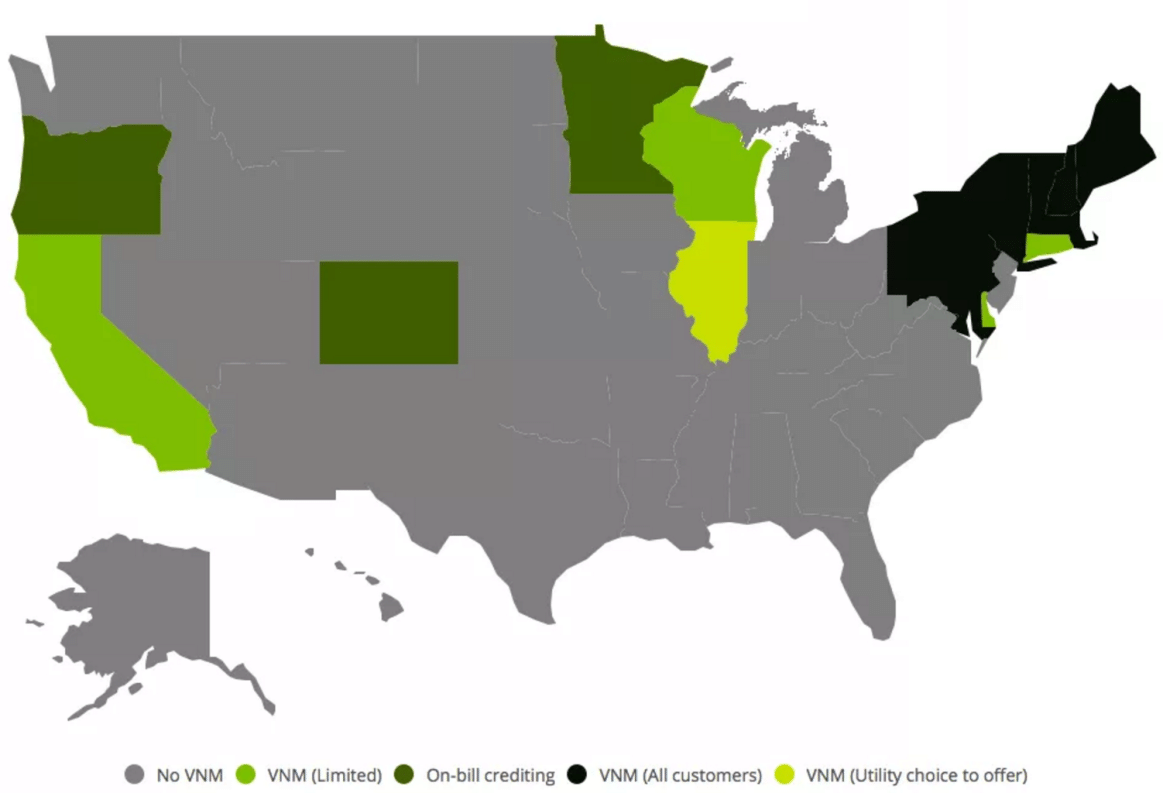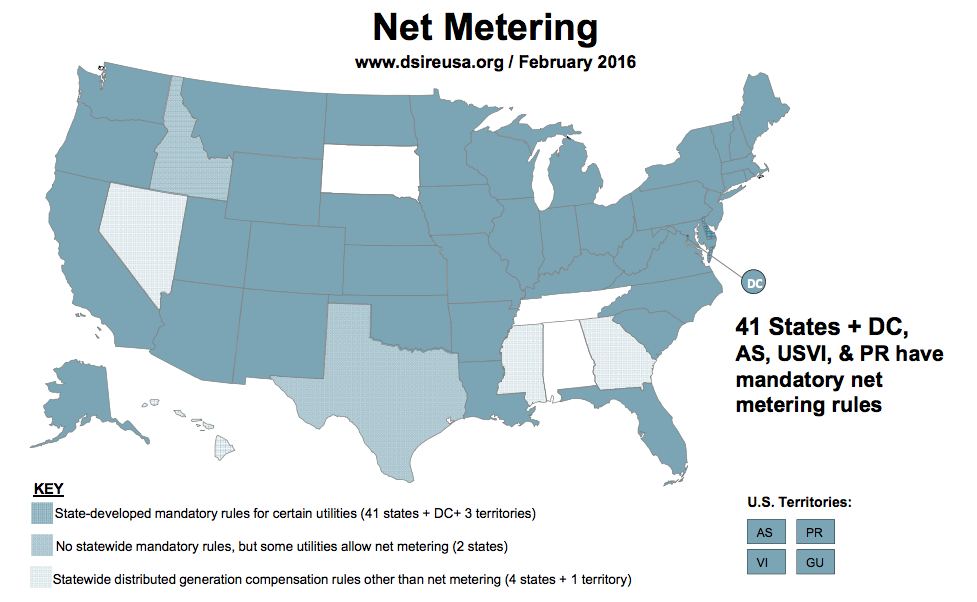
What do you do when your array is producing more energy than you consume? Or when you want to go solar but your available property has a suboptimal solar resource? In the absence of a battery backup system solar customers in 40 US states have the ability to back-feed energy to the grid in exchange for compensation from the local utility. By running the meter “backwards” homes and businesses can effectively store energy on the grid for later use. During periods of time in which an array is not producing customers consume energy from the grid as usual, running the meter in the normal fashion. If at the end of the month a customer feeds more energy onto the grid than they consume, they will receive a credit on their account toward future consumption.
Although net metering has already contributed greatly to the positive economics of residential solar, further evolution of net metering policy stands to advance PV penetration, save consumers and government money, all while improving the quality of the generation fuel mix. Enter virtual net metering (VNM). VNM is nearly identical in structure to standard net metering except that under VNM customers can receive credit from the utility even if the generation is not collocated with consumption. In other words, VNM “allows PV generation in one location to offset electricity costs at another location” (Cadmus 2013). These systems can be operated under an LLC or structured as Community Shared Solar or Community Solar Projects (CSS/CSP). In some states VNM also extends to the generation and sale of SRECs by remotely cited generation.
VNM is an important policy evolution for a couple reasons. First, VNM provides consumers access to solar who cannot install a system at their own residence. A 2008 NREL study estimated that roughly 25% of residential buildings can effectively accommodate PV (http://www.nrel.gov/docs/fy09osti/44073.pdf). VNM allows renters and those who live in apartments the opportunity to not only take part, but benefit from solar. Second, by allowing a system to be deployed remotely from its benefactors, privately owned systems and CSSs can benefit from more ideal citing (free of shading and roof angle constraints) and from economies of scale. Studies have found spreading fixed and soft costs over larger systems can reduce installed costs by 35%.

VNM has already found great success in Massachusetts. Developers are poised to deliver nearly 40 MW of solar capacity spread over 10 locations in the Commonwealth. These projects have locked in PPAs with 16 housing authorities (HAs) across the state at rates 15%-25% below the standard retail rate. Estimated to save HAs hundreds of thousands of dollars per year in energy costs, lower rates save the state money and open up funding for other programs.
Successes aside, the evolution of net metering policies is far from complete. Similar to microgrid regulation, successful citing of a CSS project is contingent upon the ownership model. For instance, current Mass VNM regulation stipulates that systems with a public host customer (the utility’s customer on account) be capped at 60 kW AC. This limits any benefits derived from the economies of scale associated with larger systems. Legislation also limits total net metered capacity to 7% of a given utility’s peak load for private systems and 8% for public systems. Although assurances exist to ensure a project beginning construction will receive net metering services, binding caps could squeeze out future projects. Interconnection delays and tax status uncertainties may also hamper private CSS investment.
Although challenges persist, VNM and similar solar sharing models will likely remain attractive to both consumers and other private entities. The Massachusetts Department of Energy Resources suggests two model frameworks that limit exposure to utility PPA: a participant ownership model and a public lease model. These models work around existing barriers to maximize the energy and financial benefit of VNM projects.
